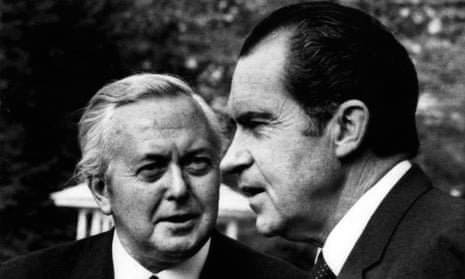Harold Samuel Nixon, though less known than his famous brother, Richard Nixon, holds an essential place in the Nixon family history. Born on June 1, 1909, in Yorba Linda, California, Harold was the eldest child in his family. His early life, marred by challenges, played a crucial role in shaping the family dynamics and had a profound impact on his younger brother Richard, who later became the 37th President of the United States.
Childhood and Family Background
Harold grew up in a loving Quaker family, the first son of Francis Anthony Nixon and Hannah Milhous Nixon. He had four brothers, though not all survived past childhood. The family lived in Southern California, and their upbringing was deeply rooted in Quaker values, emphasizing simplicity, peace, and humility.
His siblings included Richard, who grew up amidst the early financial difficulties the family faced, yet rose to significant political heights. There was also Francis Donald Nixon, often known as “Don,” Arthur Nixon, who, sadly, passed away at a young age, and Edward Nixon, the youngest. Francis and Hannah instilled a sense of resilience in their children, fostering an environment united by both religious conviction and familial cooperation.
Life Events and Challenges
Impact of Growing Up in a Quaker Family
Harold’s upbringing in a devout Quaker household involved more than just faith commitments. It shaped his worldview, instilling in him the Quaker principles of integrity, pacifism, and service. These values influenced Harold’s approach to life and his interactions with others, providing a moral compass that guided him through his short lifetime.
The family’s participation in Quaker meetings and community activities offered a close-knit environment. Set against the backdrop of early 20th-century societal norms, this upbringing was unique. Harold’s life reflected a balance between traditional Quaker simplicity and the aspirations fueled by the bustling life of Southern California.
Educational Experiences
Harold’s educational journey was as complex as it was transformative. Sent to Mount Hermon School in Massachusetts after facing some difficulties, he was given a chance to refine his character and expand his horizons. Such life experiences were not uncommon for families of that era seeking to broaden their children’s perspectives.
At Mount Hermon, Harold was described by his brother, Richard, as a tall, handsome young man with blue eyes and blond hair. His education at this boarding school was intended to provide structure and discipline. However, the distance from family might also have imparted a sense of independence and self-reflection, critical elements in the formation of one’s identity.
Struggles with Tuberculosis
Harold’s life took a pivotal turn due to his health struggles. A childhood infection weakened his immune system, eventually leading to a devastating diagnosis of tuberculosis. Tuberculosis was a severe health crisis at the time, with limited treatment options available.
The strain of the illness required significant family adjustments. Harold’s mother, Hannah, devoted herself to his care, demonstrating incredible resilience and devotion. This period was emotionally taxing for the family, drawing them closer yet altering family dynamics as Hannah’s attentions were primarily directed towards Harold’s care.
Influence and Legacy
The Nixon Family’s Move for Harold’s Health
In a desperate attempt to improve Harold’s health, the Nixon family moved to Arizona. The dry climate was believed to be beneficial for tuberculosis patients. This transition marked a chapter of hope and determination for the family, underscoring their unwavering commitment to Harold’s well-being.
The move illustrated the family’s unity and the lengths they were willing to go for each other. It placed a strain on their finances but reinforced the bonds of love and support that defined the Nixon household. As Harold’s condition worsened, the family’s faith and perseverance remained steadfast.
Harold’s Influence on Richard Nixon
Harold’s untimely death on March 7, 1933, at the age of 23, left an indelible impact on Richard Nixon. This formative experience played a significant role in shaping Richard’s character and worldview. The experience of losing Harold and his younger brother Arthur to childhood illnesses instilled a sense of resilience and determination in Richard.
Richard often spoke of Harold’s death, reflecting on how it had influenced his own life trajectory. Richard’s political career and personal demeanor were deeply affected by the early tragedies he experienced. Harold became a source of inspiration, a reminder of the fragility of life, and a motivator that propelled Richard into public service.
Remembering Harold Nixon’s Legacy
Despite Harold’s short life, his legacy endures through the lives he touched and the family he left behind. His story is a testament to the strength of family bonds and the enduring impact of love and sacrifice.
Harold is interred at Rose Hills Memorial Park in Whittier, California, a place that remains a symbol of his life and the love his family had for him. His legacy is reflected in the values imparted to his brothers and the way his life experiences have been shared within the Nixon family narratives.
Conclusion: Reflections on a Life Cut Short
Harold Nixon’s life, though brief, was full of challenges and love. His journey exemplifies the power of family, faith, and endurance amid adversity. The impact he had on his brother Richard and his family at large underscores the importance of each life, no matter how short, in shaping the lives of others.
Today, remembering Harold’s life serves as a poignant reminder of the resilience ingrained within the Nixon family fabric. His story continues to resonate, offering valuable lessons in love, sacrifice, and the unwavering strength drawn from familial bonds. In the words shared and stories told, Harold Nixon’s spirit remains alive, cherished by those who knew him and those who continue to learn about his life. For more information, visit our website Opinibiz.


